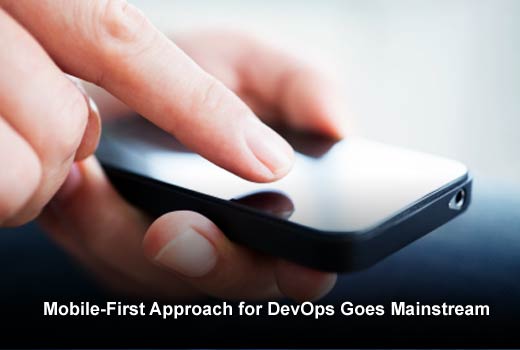Over the last few years, mobile has swept across the enterprise and mobile apps have become part of the way we communicate, collaborate and work. Creating, deploying and scaling mobile apps has evolved from something only a handful of specialists could achieve to becoming the core competency of an entire industry comprising mobile consultants, digital agencies, service providers and technology providers.
The flipside is that organizations are inundated with pitches, products and technology choices and it’s easy to lose sight of the bigger picture of what’s truly trending across mobile development amongst all the clamoring voices.
In this slideshow, Built.io, an award-winning technology provider with solutions that enable organizations to quickly create, integrate and scale apps across mobile, web and IoT, identifies the key trends that mobile developers and enterprises adopting a mobile program can benefit from right now.
2016 Mobile App Trends
Click through for five key trends that mobile developers and enterprises adopting a mobile program can benefit from right now, as identified by Built.io.
The Mobile Center of Excellence
The idea of a Mobile Center of Excellence (COE) has been talked about for years, but it’s only recently that enterprises have begun formally budgeting and assigning people to set up and staff this effort. Done right, the Mobile COE provides a centralized hub for mobile expertise and technology. By coordinating and providing guidance for all mobile projects across the organization, companies can benefit from economies of scale (e.g., when purchasing third-party products) and can both accelerate and de-risk the delivery of critical mobile solutions, by exchanging best practices, prescribing the use of approved tools and enforcing compliance with key IT and business policies.
Recommendation: Centralize your mobile efforts, take stock of all the existing tools and vendors your organizations are paying for today, then negotiate discounts.
Mobile and Integration Platforms Converge
Most apps provide their value via the data that flows through them, yet connecting the app to the systems that matter can take 10 times longer than building the app itself. Yes, you might be able to drag and drop your way to a basic app in minutes, but ensuring it can access sensitive customer or supply chain information, meet compliance and security standards, and scale across potentially dozens of integrations ranging from legacy systems in the data center to public cloud-based systems – that’s a whole other story. As a result, many mobile platform vendors are shoring up their integration capabilities. Similarly, integration platform vendors are seeing many of their use cases now being driven by mobile and are looking to add corresponding turnkey mobile capabilities. Expect technologies like iPaaS and MBaaS to converge in 2016.
Recommendation: Ask your mobile vendors about integration and your integration vendors about mobile capabilities. Work with the ones that have a compelling and credible story.
Best-of-Breed Trumps All-in-One
When mobile expertise was still hard to find, mobile platforms provided value by combining a set of finicky technologies (like authentication, push notifications, geo-location, analytics, etc.) into a bundled and tuned stack – an all-in-one platform for developers to consume. Building a mobile app has since become something that’s well within reach of most organizations and the bar has been raised significantly. Instead of cookie cutter apps, users now demand engaging, bespoke mobile experiences. With the rise in popularity of so-called microservices, developers have become quite comfortable assembling individual, best-of-breed services and combining them into custom mobile solutions. Similarly, forward-thinking MBaaS and MAPD vendors are breaking down their offerings into loosely coupled components that can be consumed together or separately as part of a “pluggable” architecture.
Recommendation: Insist on an architecture that allows you to run A/B tests – every month, if needed. Pick whichever service provides better results and incorporate the winner into your solution for continuous improvements.
Mobile-First Approach for DevOps Goes Mainstream
After you build a mobile app, who makes sure that the app is deployed without any hiccups? How do you best monitor performance and ensure it scales smoothly and operates continuously throughout frequent updates? DevOps has been doing wonders for cloud-based stacks and web applications. Organizations are already investing in bringing those same benefits to their mobile projects and operations. As apps are rolled out across multiple channels, mobile is becoming the most important one for DevOps.
Recommendation: Invest in mobile DevOps expertise, either in-house or via a trusted third-party team. Make sure you’re not boxed into any particular architecture or cloud infrastructure provider so you can switch between AWS, Azure, etc.
The Internet of APIs
Whether you think the Apple Watch is a smartphone, a wearable, a sensor or a supercomputer with a really tiny screen, you are 100 percent right. Form factors are blurring the boundaries between mobile and IoT use cases. What both domains have in common is that applications are conceived, created and connected API-first. What sits behind the API – a “thing,” a “system,” or a “service” – doesn’t matter as much as how you can interface with it. REST-based and real-time APIs aren’t a luxury anymore, they’re table stakes.
Recommendation: Research API management best practices and vendors. Don’t build or buy any more apps without a solid, public, documented API.








